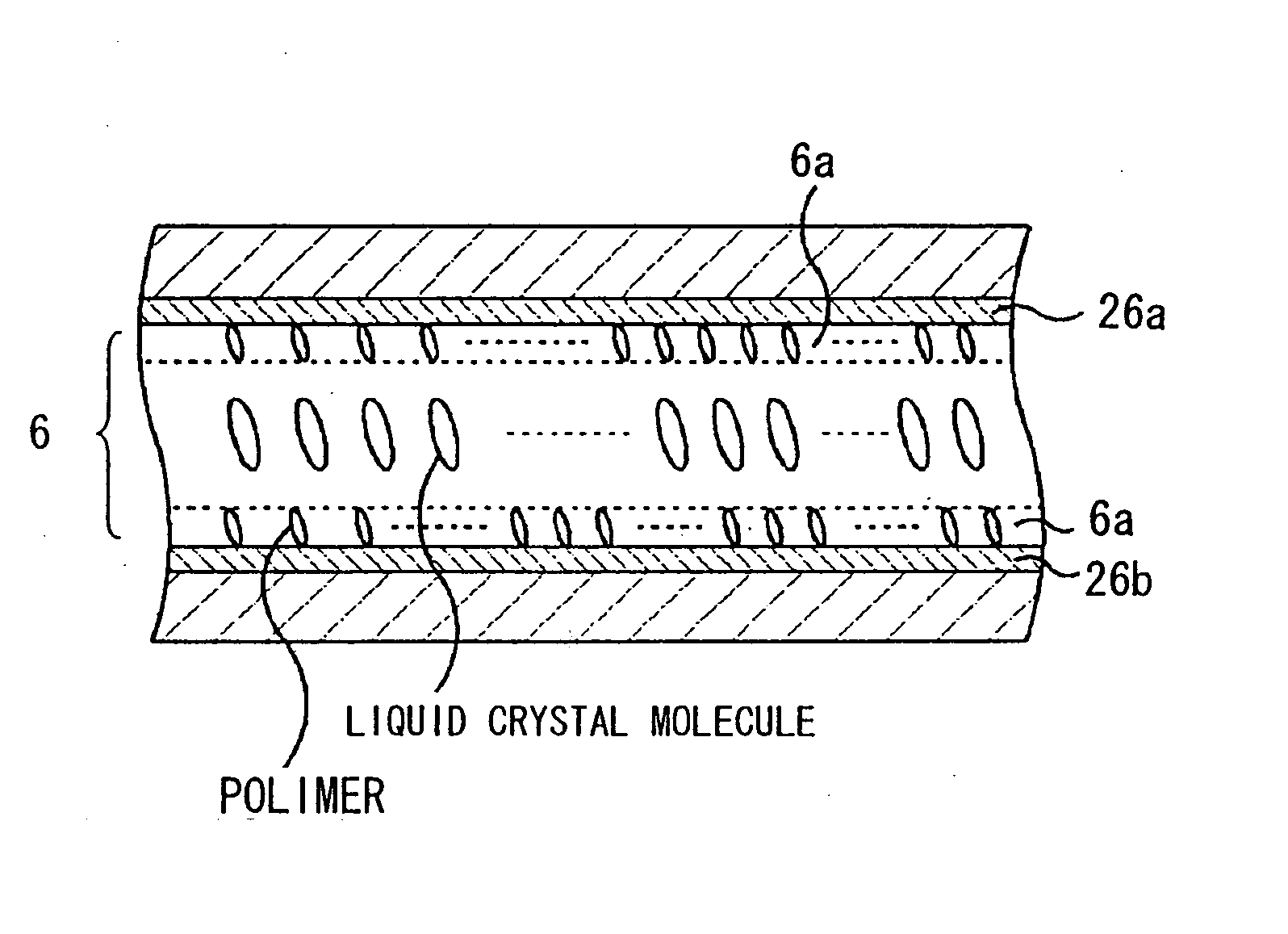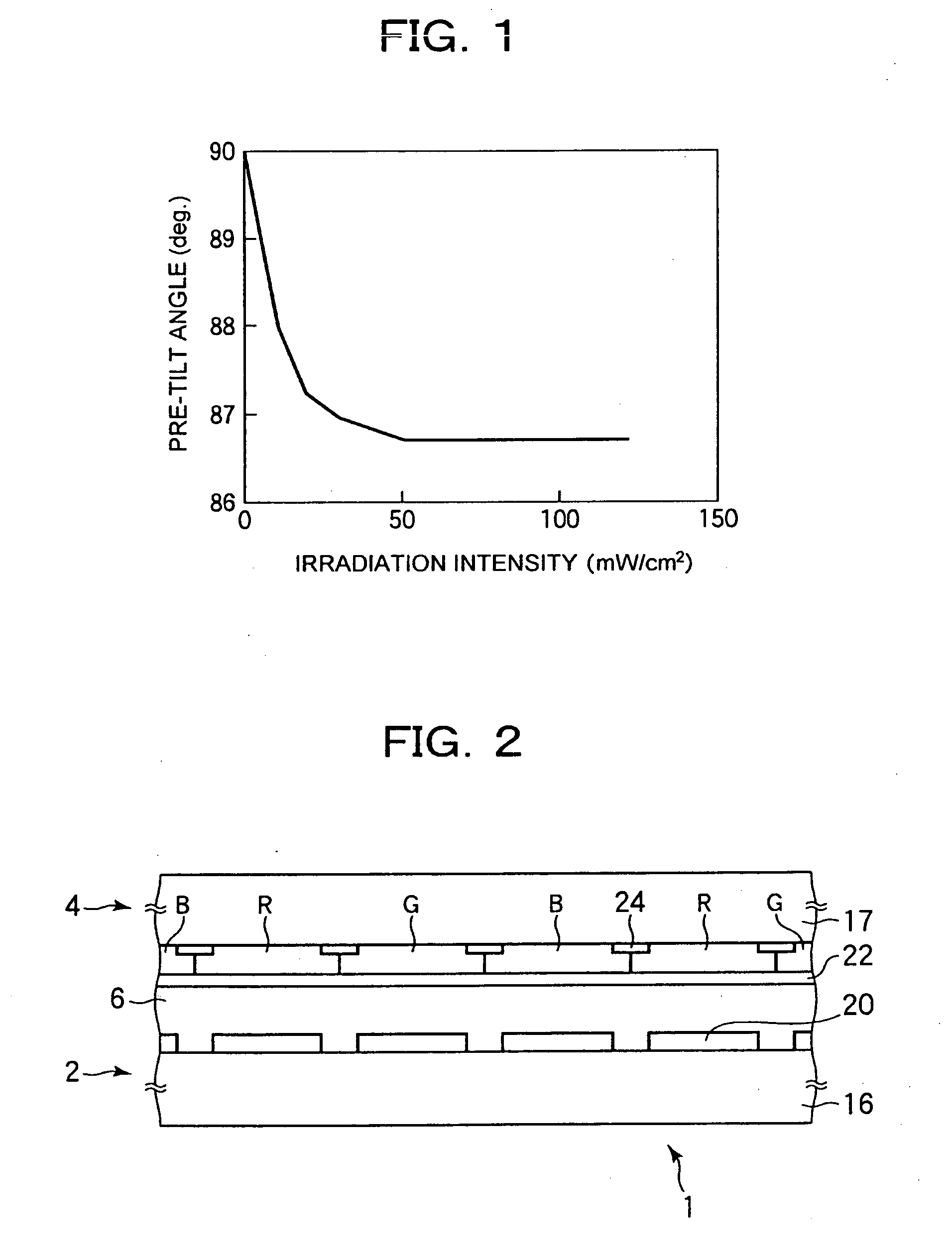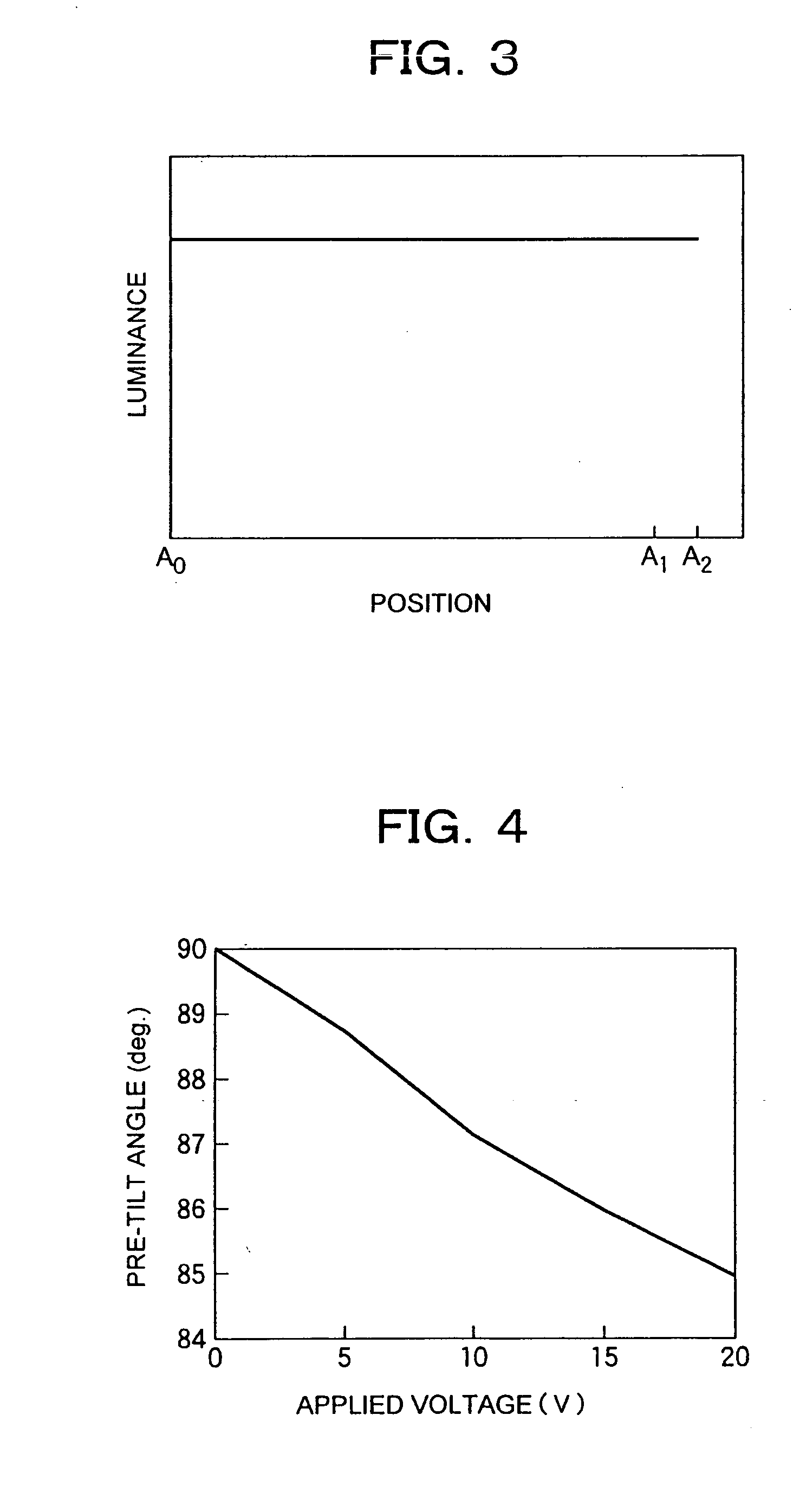Liquid crystal display device's substrate, liquid crystal display device including the same, and manufacturing method of the same
a technology of liquid crystal display device and substrate, which is applied in non-linear optics, instruments, optics, etc., can solve the problems of poor visual angle characteristics, low transmission factor, and feeling of dark
- Summary
- Abstract
- Description
- Claims
- Application Information
AI Technical Summary
Benefits of technology
Problems solved by technology
Method used
Image
Examples
first embodiment
[0068] A liquid crystal display device according to a first embodiment of the invention, a manufacturing method of the same, and a liquid crystal display device's substrate used for the same will be described by using examples.
example 1-1
[0069] First, a liquid crystal display device according to example 1-1 of this embodiment and a manufacturing method thereof will be described with reference to FIGS. 1 to 3. In this example, when a polymer for regulating the alignment of a liquid crystal molecule at the time of driving is formed, the irradiation intensity of UV light to be irradiated is made different for each region, so that the same pre-tilt angle is given to a liquid crystal layer in the whole display region. By this, uniform T-V characteristics can be obtained in the whole display region.
[0070] The principle of the manufacturing method of the liquid crystal display device according to this example will be described. FIG. 1 is a graph showing the relation between the irradiation intensity of UV light and the pre-tilt angle of a liquid crystal molecule. The horizontal axis indicates the irradiation intensity (mW / cm2) of the UV light, and the vertical axis indicates the pre-tilt angle (deg.) of the liquid crystal...
example 1-2
[0078] Next, a manufacturing method of a liquid crystal display device according to example 1-2 of this embodiment will be described with reference to FIG. 4. In this example, in order to give different pre-tilt angles to liquid crystal molecules of a pixel in which a CF resin layer of R is formed (hereinafter referred to as an R pixel), a pixel in which a CF resin layer of G is formed (hereinafter referred to as a G pixel), and a pixel in which a CF resin layer of B is formed (hereinafter referred to as a B pixel), different voltages are applied to the liquid crystal layer 6 for the respective colors when UV light is irradiated to polymerize a monomer.
[0079]FIG. 4 is a graph showing the relation between the applied voltage and the pre-tilt angle of a liquid crystal molecule. The horizontal axis indicates the applied voltage (V) to the liquid crystal layer 6, and the vertical axis indicates the pre-tilt angle (deg.) of the liquid crystal molecule obtained after the irradiation of a...
PUM
| Property | Measurement | Unit |
|---|---|---|
| pre-tilt angle | aaaaa | aaaaa |
| voltage | aaaaa | aaaaa |
| time | aaaaa | aaaaa |
Abstract
Description
Claims
Application Information
 Login to View More
Login to View More - R&D
- Intellectual Property
- Life Sciences
- Materials
- Tech Scout
- Unparalleled Data Quality
- Higher Quality Content
- 60% Fewer Hallucinations
Browse by: Latest US Patents, China's latest patents, Technical Efficacy Thesaurus, Application Domain, Technology Topic, Popular Technical Reports.
© 2025 PatSnap. All rights reserved.Legal|Privacy policy|Modern Slavery Act Transparency Statement|Sitemap|About US| Contact US: help@patsnap.com



